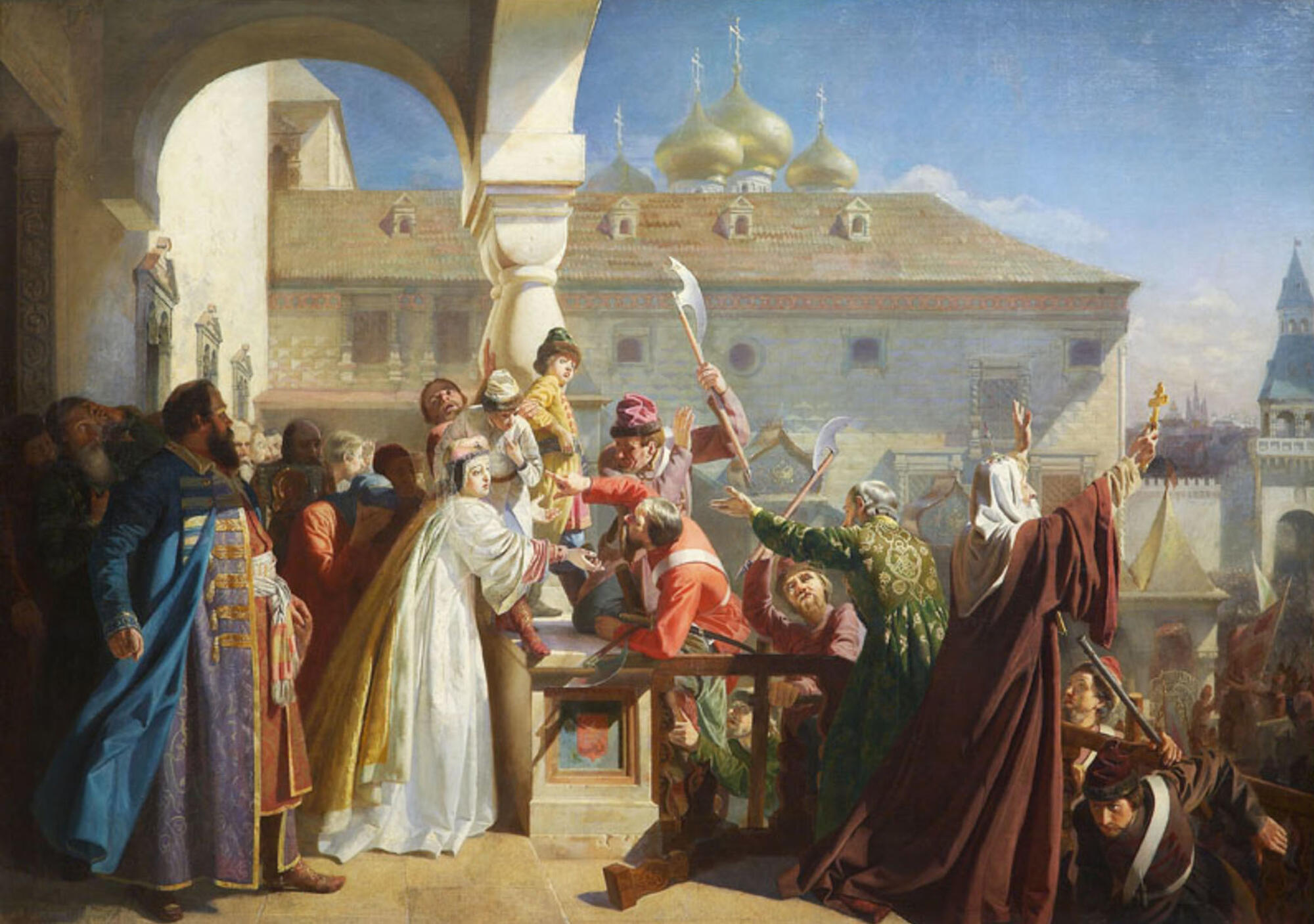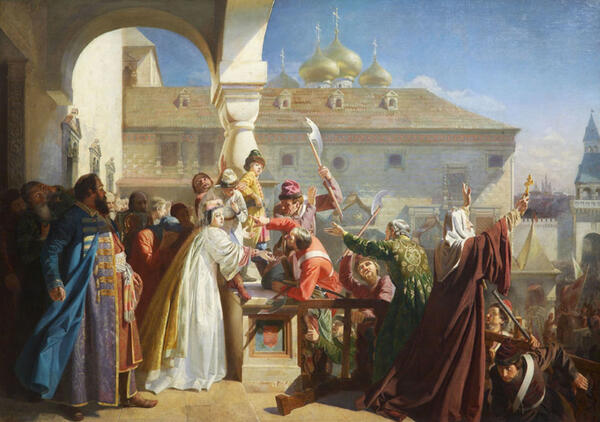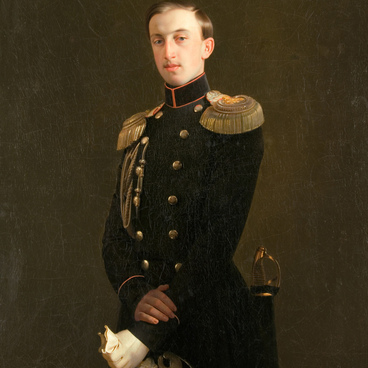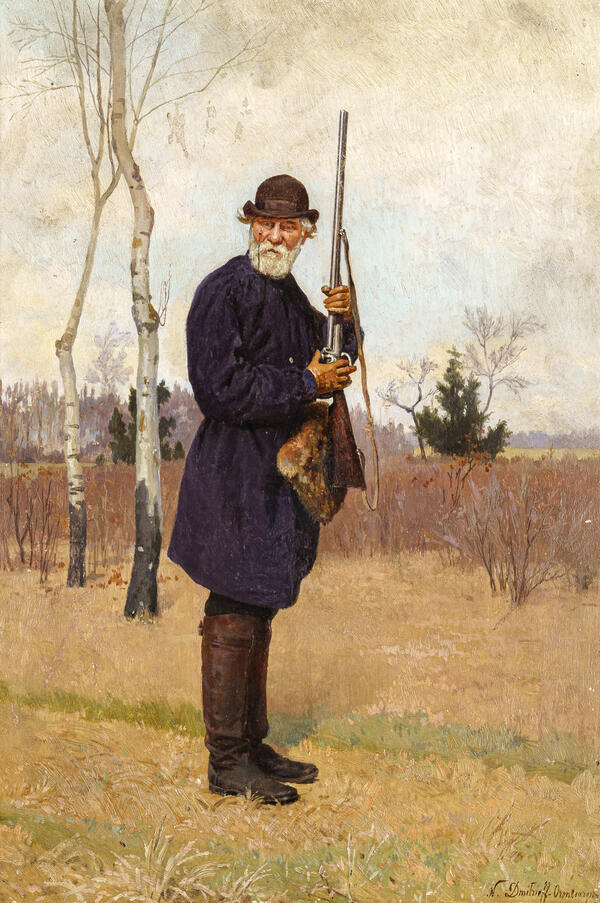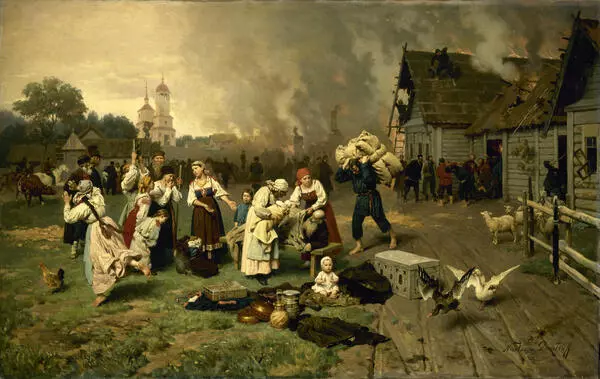The plot of the work ‘Streltsy uprising’ is based on historical events that took place at the beginning of the reign of Peter the Great. The work shows one of the scenes of the Moscow uprising of the Streletsky army in 1682, which had a complex background. After the death of the childless Feodor III Alexeyevich, a struggle broke out between two strong boyar clans, who supported various other children of Tsar Alexei Mikhailovich as candidates for the throne. The Miloslavskys wanted to see Tsarevich Ivan as Tsar, the Naryshkins supported Tsarevich Peter. The 25-year-old princess Sophia Alekseyevna also defended her interests.
The peak of this confrontation was the Streltsy uprising, after which all three were named the rulers of the country: Tsarevich Ivan, Tsarevich Peter and Tsarevna Sophia, who became regent with her young brothers. The reason for the disturbance of the soldiers was the false news of the death of Tsarevich Ivan, cleverly spread by the Miloslavsky. The indignant army came to the Kremlin with a demand to give them the Naryshkins, ‘tortured’ Tsarevich.
Wishing to pacify and reason with the soldiers, Tsarina Natalya Naryshkina, with both tsareviches accompanied by the boyars and Patriarch Joachim, appears on the Red Porch of the Palace of the Facets.
The crowd, seeing both tsareviches safe and sound, was in confusion for some time. This is the moment that the artist masterfully shows. It seems that history can be changed by an effort of will.
But in a moment, in response to the demand of Prince Mikhail Dolgorukov to disperse to the barracks, the furious soldiers rushed to the porch, grabbed the prince and threw him on their spears. Then they broke into the Kremlin and continued the massacre.
A year after the creation of the historical canvas, Nikolai Dmitriev himself became a participant in the " uprising of fourteen’, the famous protest of 13 young artists and sculptor Vasily Kreitan. Young artists opposed the task to paint on one theme of Scandinavian mythology “Feast in Valhalla”, which was set by the Council of the Art Academy. The “rioters” filed a petition asking to be free to choose a plot, in accordance with the personal preferences of each artist. The Academy Council considered this act to be impudence.
After the “riot” Dmitriev together with other painters, who later became the pride of Russian art, left the institution with the modest title of class artist of the 2nd degree, and then took part in the independent establishment called Artel of Artists, being a member until 1871. During the “artel” period, Dmitriev began to sign his paintings as " Dmitriev-Orenburgsky’ in order to distinguish himself from the artists of the same name. This addition to the last name was not accidental. The artist’s father was a landowner of the Orenburg province.
The peak of this confrontation was the Streltsy uprising, after which all three were named the rulers of the country: Tsarevich Ivan, Tsarevich Peter and Tsarevna Sophia, who became regent with her young brothers. The reason for the disturbance of the soldiers was the false news of the death of Tsarevich Ivan, cleverly spread by the Miloslavsky. The indignant army came to the Kremlin with a demand to give them the Naryshkins, ‘tortured’ Tsarevich.
Wishing to pacify and reason with the soldiers, Tsarina Natalya Naryshkina, with both tsareviches accompanied by the boyars and Patriarch Joachim, appears on the Red Porch of the Palace of the Facets.
The crowd, seeing both tsareviches safe and sound, was in confusion for some time. This is the moment that the artist masterfully shows. It seems that history can be changed by an effort of will.
But in a moment, in response to the demand of Prince Mikhail Dolgorukov to disperse to the barracks, the furious soldiers rushed to the porch, grabbed the prince and threw him on their spears. Then they broke into the Kremlin and continued the massacre.
A year after the creation of the historical canvas, Nikolai Dmitriev himself became a participant in the " uprising of fourteen’, the famous protest of 13 young artists and sculptor Vasily Kreitan. Young artists opposed the task to paint on one theme of Scandinavian mythology “Feast in Valhalla”, which was set by the Council of the Art Academy. The “rioters” filed a petition asking to be free to choose a plot, in accordance with the personal preferences of each artist. The Academy Council considered this act to be impudence.
After the “riot” Dmitriev together with other painters, who later became the pride of Russian art, left the institution with the modest title of class artist of the 2nd degree, and then took part in the independent establishment called Artel of Artists, being a member until 1871. During the “artel” period, Dmitriev began to sign his paintings as " Dmitriev-Orenburgsky’ in order to distinguish himself from the artists of the same name. This addition to the last name was not accidental. The artist’s father was a landowner of the Orenburg province.
